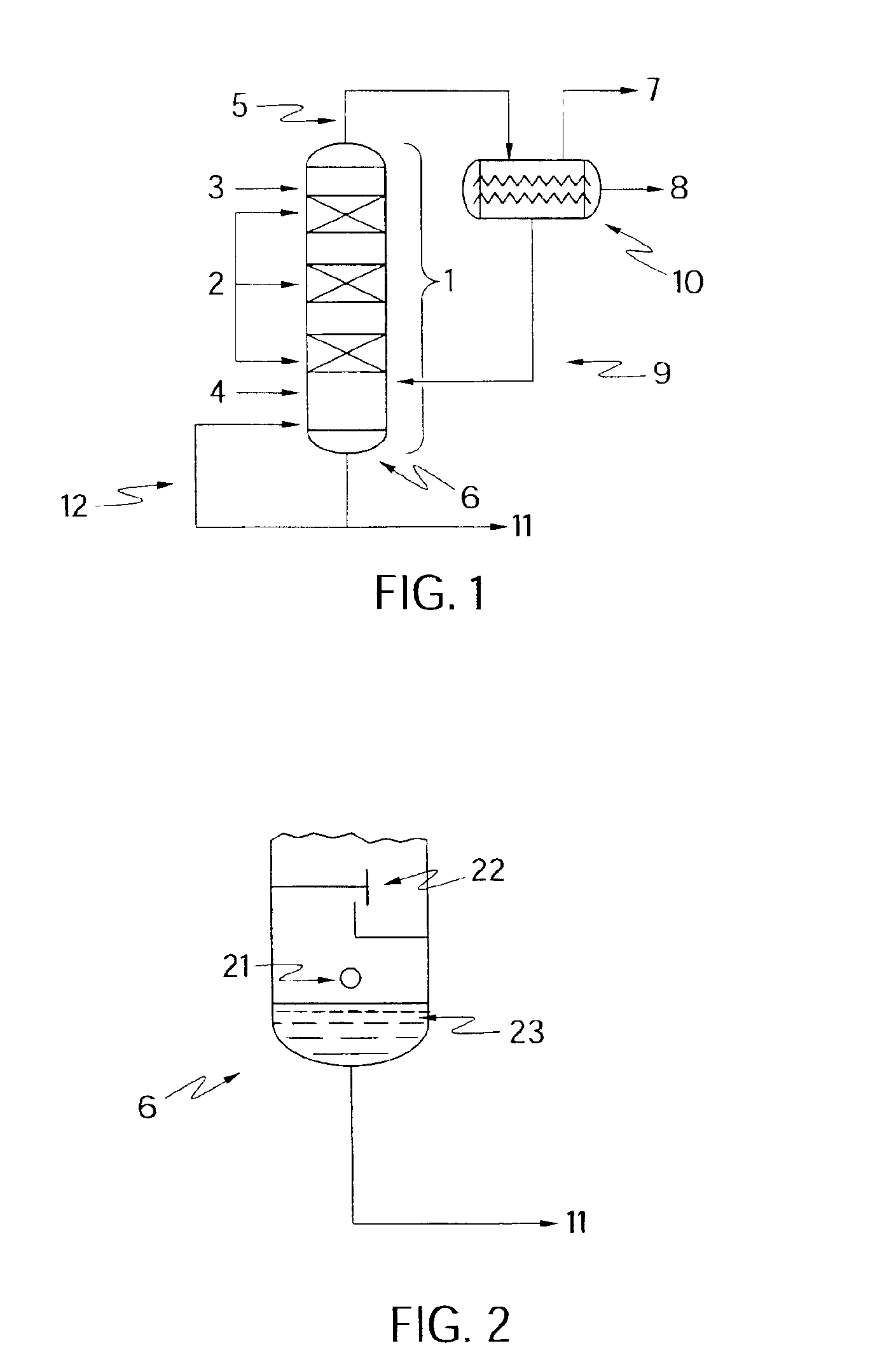Process for hydrolyzing di-isopropyl ether to isopropyl alcohol by catalytic distillation using a solid acid catalyst
a technology of isopropyl ether and catalytic distillation, which is applied in the direction of hydroxy group addition, organic chemistry, oxygen-containing compound preparation, etc., can solve the problem that none of the foregoing processes is readily adaptable to vary appreciably, recycles impurities which have a negative effect on the process, and still produces dipe in the amount of about 10%. , to achieve the effect of high yield
- Summary
- Abstract
- Description
- Claims
- Application Information
AI Technical Summary
Benefits of technology
Problems solved by technology
Method used
Image
Examples
Embodiment Construction
[0035]Referring now in more detail to the preferred embodiment illustrated in FIG. 1, catalytic distillation tower or column 1 comprises one or more catalyst trays 2 and includes an intake for water 3 and feed stream 4, comprising DIPE from the Sulfuric Acid Process. The overheads, which may comprise unreacted DIPE, lights, water-volatile heavies, propylene, and various azeotropes including a IPA / DIPE / water azeotrope, are taken off at 5, and the bottoms, comprising dilute IPA / water mixture, are taken off at 6.
[0036]Water feed 3 is preferably provided above the trays, as shown in FIG. 1, but may also be provided below the trays as steam (inlet 21, as shown in FIG. 2, described below in more detail). A combination of water and steam may be used. Water and steam may also be provided at various other points in column 1, depending on packing arrangements, as may be determined by one of ordinary skill in the art in possession of the present disclosure.
[0037]In the most preferred embodimen...
PUM
| Property | Measurement | Unit |
|---|---|---|
| temperature | aaaaa | aaaaa |
| volumes | aaaaa | aaaaa |
| acid | aaaaa | aaaaa |
Abstract
Description
Claims
Application Information
 Login to View More
Login to View More - R&D
- Intellectual Property
- Life Sciences
- Materials
- Tech Scout
- Unparalleled Data Quality
- Higher Quality Content
- 60% Fewer Hallucinations
Browse by: Latest US Patents, China's latest patents, Technical Efficacy Thesaurus, Application Domain, Technology Topic, Popular Technical Reports.
© 2025 PatSnap. All rights reserved.Legal|Privacy policy|Modern Slavery Act Transparency Statement|Sitemap|About US| Contact US: help@patsnap.com

